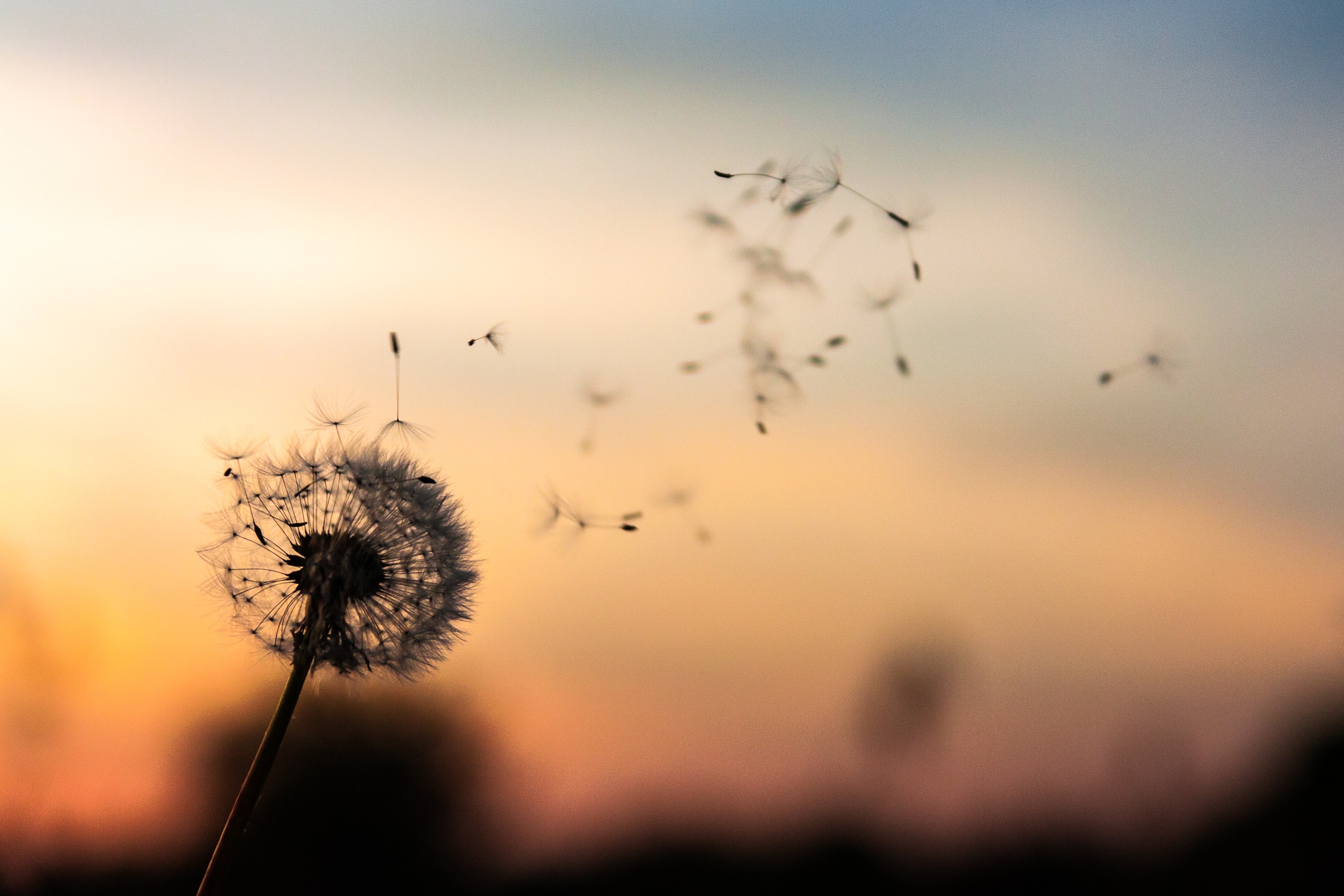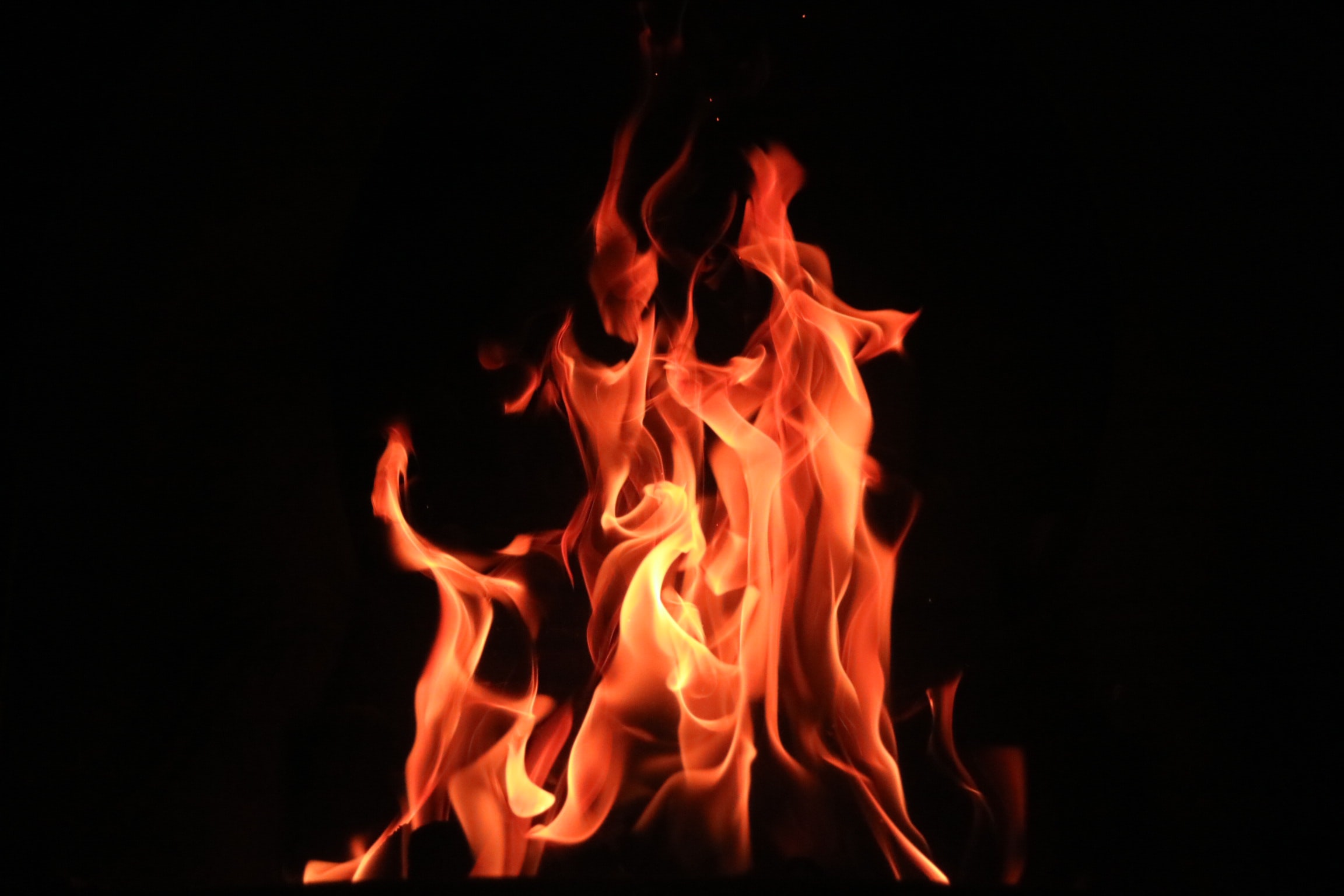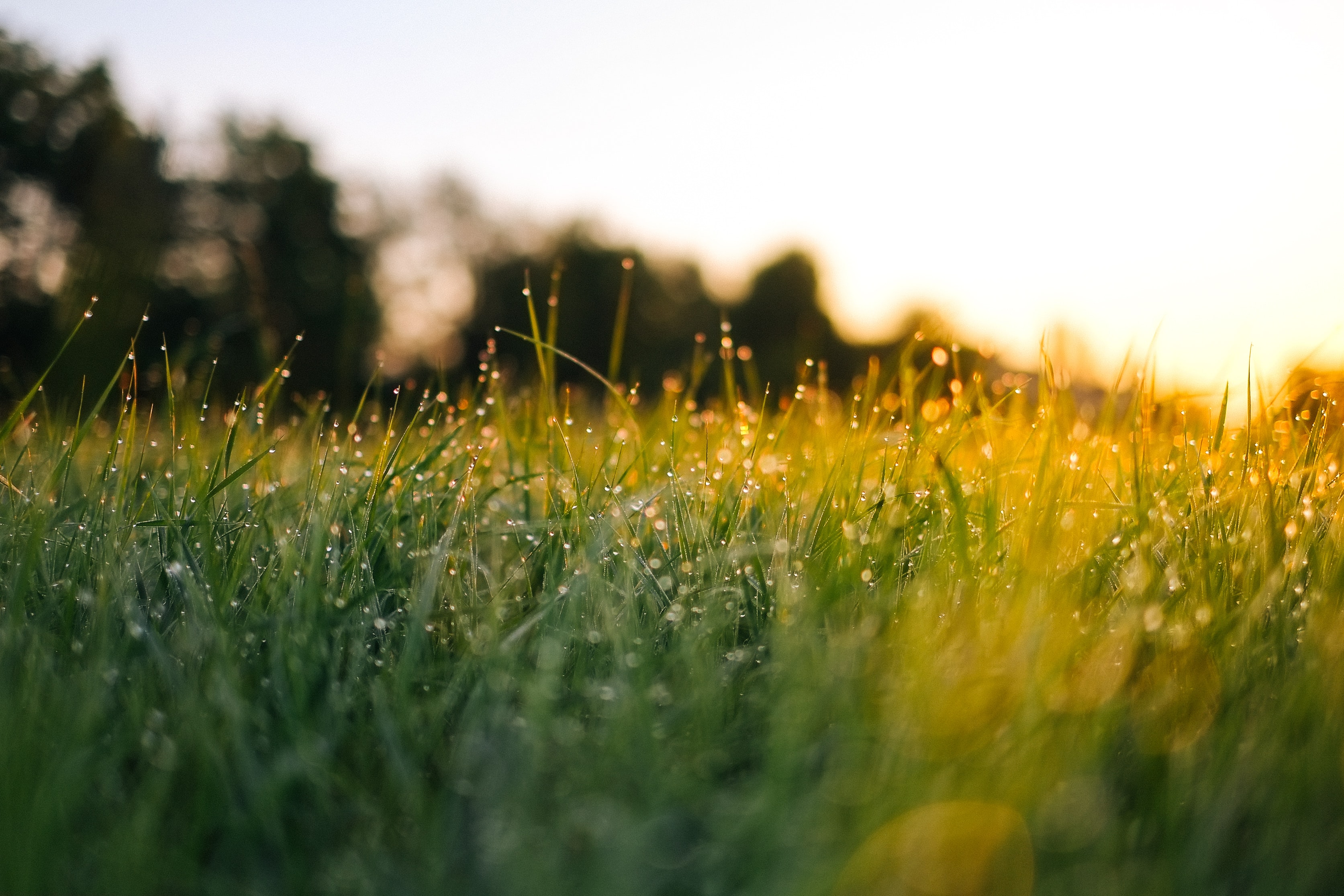How necessary it is for monks to work in the fields, in the rain, in the sun, in the mud, in the clay, in the wind: these are our spiritual directors and our novice-masters. They form our contemplation. They instill us with virtue. They make us as stable as the land we live in.
—Thomas Merton, The Sign of Jonas
According to the Celtic Christian tradition, there are two books of divine revelation: the book of scripture and the book of nature. Creation itself is a sacred text through which the presence of God is revealed to us.
Jesus himself exemplifies our connection to creation. He expressed many of his teachings through parables, profound stories that reveal the nature of God and God’s reign. Much of the language Jesus used is earth-based, rooted in metaphors of seed, fruit, and harvest. These are images with which his listeners would have identified.
Christ’s ministry also centers around elemental places: feasting on the gifts of the earth at the table, his appearance on the mountain as a place of transfiguration, his encounters at the well, and his own baptism in the Jordan River.
Likewise, the psalms use the language of wind, fire, water, and earth to describe the nature of the divine. They give insight into the multiplicity of God’s qualities and celebrate a God who can be found within the matrix of creation.
In the Christian scriptures, the four elements are represented in multiple ways. The Spirit comes as both wind and fire. The living water of baptism is a central symbol for our self-understanding as members of the Christian community. The communion feast springs from the gifts of bread and wine, earth’s nourishment.
By rooting our prayer in the elements, we begin to forge an awareness of how much we are a part of creation. We experience ourselves as a part of the matrix of the natural world and as creatures just like other creatures. In opening ourselves to these metaphors for how God works in the world, we discover a God who dwells at the heart of all living things, who sustains and transforms creation moment by moment, and who is an indispensable presence in the world.

Wind
All praise be Yours, my God, through Brothers Wind and Air,
And fair and stormy, all the weather’s moods,
By which You cherish all that You have made.
—St. Francis of Assisi, Canticle of the Sun
You ride on the wings of the wind,
You make the winds your messengers.
—Psalm 104:3–4
The first Genesis creation story says the mighty wind was present at the very beginning of creation. In the second creation story we are offered the image of a transcendent and powerful God who gathers up earth and mud and lovingly molds each indentation, dimple, and crevice into the human person, breathing divine spirit and life that animates the human into a living being.
Here is an expression of God’s tender immanence: God is as close to us as our very breath.
Scripture tells us in many ways that it is through the gift of the Spirit that God is the animator of all living things. The Hebrew word for spirit is ruach, which also means the breath of God. God breathed life into us at the moment of creation and continues to breathe into us, through us, and around us. The sacred source of life blows this breath of life into all of creation.
The great modern mystic and Jesuit Pierre Teilhard de Chardin offered the vision of the “breathing together of all things.” We are connected to all of life through breath—to humans and animals as well as to trees and plants that breathe in the carbon dioxide we release and return oxygen to us in a harmonious exchange and dance.
Practice: Jesus Prayer
Praying with the gift of air through attention to breath is an ancient Christian practice. One of the earliest known forms is the Jesus Prayer. The idea behind this prayer is that we connect our conscious prayer with each breath so that our awareness of God becomes as natural as our breathing and that we might learn to “pray without ceasing” (1 Thess. 5:17).
The words of this prayer said on the in-breath are “Lord Jesus Christ, Son of God” and on the out-breath “have mercy on me, a sinner.” You can also create your own sacred phrase to repeat on the in-breath and out-breath. For instance, upon breathing in I might say, “I receive the gift of life.” Upon breathing out I might say, “I release and surrender.”
Spend a few moments in silence to see if you can receive the words of your own Jesus Prayer, those that rise up from your heart, rather than trying to figure it out.

Fire
All praise be Yours, my God, through Brother Fire,
Through whom You brighten up the night.
How beautiful he is, how gay!
Full of power and strength.
—St. Francis of Assisi, Canticle of the Sun
I am the light of the world. Whoever follows me will never walk in darkness, but will have the light of life.
—John 8:12
Scripture is filled with images of light and fire as symbols of the ways in which God illuminates our world and our souls. Moses encounters God for the first time in a burning bush, and from those flames God speaks to Moses. After the escape from Egypt, God sends a pillar of fire to guide the Israelites across the desert by night, an ongoing guiding beacon.
In the gospel story of the transfiguration, Jesus “shone like the sun, and his clothes became dazzling white” (Matt. 17:2). Here, fire and illumination are again a window through which to glimpse the divine.
For Gregory Palamas, a 14th-century Orthodox monk, it was the disciples who changed at the transfiguration, not Christ. Christ opened their eyes to be able to see him as he truly is: a source of radiance in the world. To see with the eyes of the heart, we need to open ourselves to what is beneath the surface of things.
On the feast of Pentecost, the story from the second chapter of Acts of the Apostles says, “Divided tongues, as of fire, appeared among them, and a tongue rested on each of them.” The apostles had gathered together in an upper room, uncertain of what to do next after Christ’s death. Pentecost, therefore, is a story of the fire of courage being breathed into those earliest followers.
Practice: Contemplative walk
Go for a slow and mindful contemplative walk. In this practice you aren’t trying to get anywhere, just bringing your awareness fully present to each moment.
Begin by offering a prayer for your eyes to be opened and to see clearly. Pay attention to the world around you and moments that shimmer forth. As you walk you might notice the way light illumines the trees and other plants. There might be a flower that seems to call you to draw closer. Stay open to these encounters with the transfiguration of the world.
When something does shimmer, pause and stay with it for as long as you need. Offer a prayer of gratitude for the ways the world behind the world is revealed to you.

Water
All praise be Yours, my God, through Sister Water,
So useful, humble, precious, and pure.
—St. Francis of Assisi, Canticle of the Sun
Let anyone who is thirsty come to me, and let the one who believes in me drink.
As the scripture has said: “Out of the believer’s heart shall flow rivers of living water.”
—John 7:37–38
In the first Genesis creation story, the waters exist before the light and creation emerge. In Christianity, the font of holy water is the place of baptism and initiation into the community. Jesus was baptized in the Jordan River. At Mass the priest washes his hands as the eucharistic prayer begins and drops a splash of water to mingle with the wine.
In the gospel story of the Samaritan woman at the well, Jesus encounters the woman at the height of the day’s heat. She is thirsting desperately for God. The story invites us to consider the desert of our profound longing. At the moment when Jesus offers her living water, we too are invited to consider how that healing water restores us to wholeness.
Across the landscape of my adopted Ireland there are nearly 3,000 holy wells, venerated in Celtic Christian tradition as sacred places where water surges forth. These are still places of reverence and ritual, of blessing and healing. People celebrate what are called “pattern days”—each well is connected to a particular saint, and on the saint’s feast day is a gathering at the holy well with a particular set of prayers.
Practice: Ignatian contemplation with the woman at the well
Ignatian contemplation is a way of entering into a scripture passage with all of your senses.
Open to John 4:1–42 and slowly read the passage through once. Then set it aside and close your eyes, allowing yourself to move into your imagination and step into the scene.
Notice the sights, sounds, smells, tastes, and feelings. Watch as Jesus interacts with the Samaritan woman. See the expressions on both of their faces as they move through their conversation. Take in that moment when Jesus offers the woman living water and she accepts and is able to receive this gift into her life. Imagine yourself drinking it.
End with a conversation with Jesus about where you would like to have living water poured into your own life.

Earth
All praise be Yours, my God, through Sister Earth, our mother,
Who feeds us in her sovereignty and produces
Various fruits and colored flowers and herbs.
—St. Francis of Assisi, Canticle of the Sun
I am the Vine, you are the branches.
—John 15:5
In Jesus’ parables he uses metaphors of soil and harvest to deliver his message. He calls on images of soil and seed, sheep and trees, field and treasure to describe the kingdom of heaven.
In this way, Jesus is telling us that this kingdom is not some far-off, unreachable place, but here to be discovered in the midst of everyday life. In the parable of the sower, we are invited to consider the state of our own inner soil.
In the second Genesis creation story, God forms humans from the dust of the earth and breathes the breath of life into our nostrils. We are of the earth, formed from dust and clay. We will one day return to the earth as we are woven into the cycles of birth and death. On our life’s journey we depend on and are sustained by the fruits of the earth.
Ritual meals and feasting occur in all traditions. The bread of life sustains us in all of our work and acts of love. Wheat and grapes are the eucharistic source of our communal nourishment and fruitful lives, a sacramental meal.
Practice: Pilgrimage to a holy mountain
Whether Moses receiving the Ten Commandments on Mount Sinai, Jesus transfigured on a mountain, or the Mount of Olives where Christ spends time in the Garden of Gethsemane at the end of his life, the metaphor of climbing the holy mountain is one we find often in scripture. Psalm 98 tells us that the “hills sing” in praise of God.
Make a pilgrimage to a nearby holy mountain or other place of elevation (it could just be a hill). It may be just a few miles away or several hundred. Be intentional about the journey and pack your supplies well.
As you climb, see if you can stay focused on each step rather than on the end goal. As you reach the top, take in the view. Savor the wide horizon before you. See what is revealed anew to you about God from this perspective.
Conclusion
Create an altar
To bring prayers of the elements into your daily life, consider creating an altar somewhere in your home that is a reminder of the sacred presence in your midst. This could be placed on a small table, a shelf, or even a windowsill. In the center place a cross and then around it feathers or incense to symbolize air and wind, a candle for fire, a bowl of water or shell for water, and stones or pinecones for earth.
Each day offer a prayer for gratitude for the ways in which God inspires you and sustains your breath, for the fire of compassion and illumination, for the life-giving grace and flow of water, and for the nourishment of the earth. Close by reading Psalm 104, one of the great psalms celebrating how all creation and the elements give praise to God.
This article also appears in the August 2019 issue of U.S. Catholic (Vol. 84, No. 8, pages 12–17).













Add comment